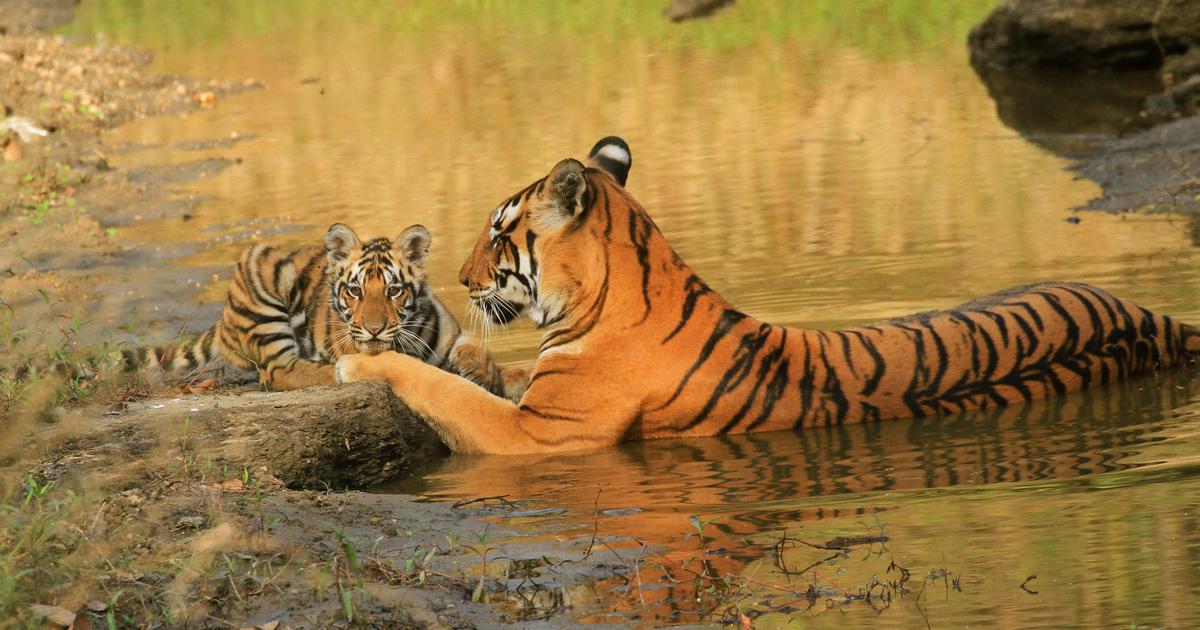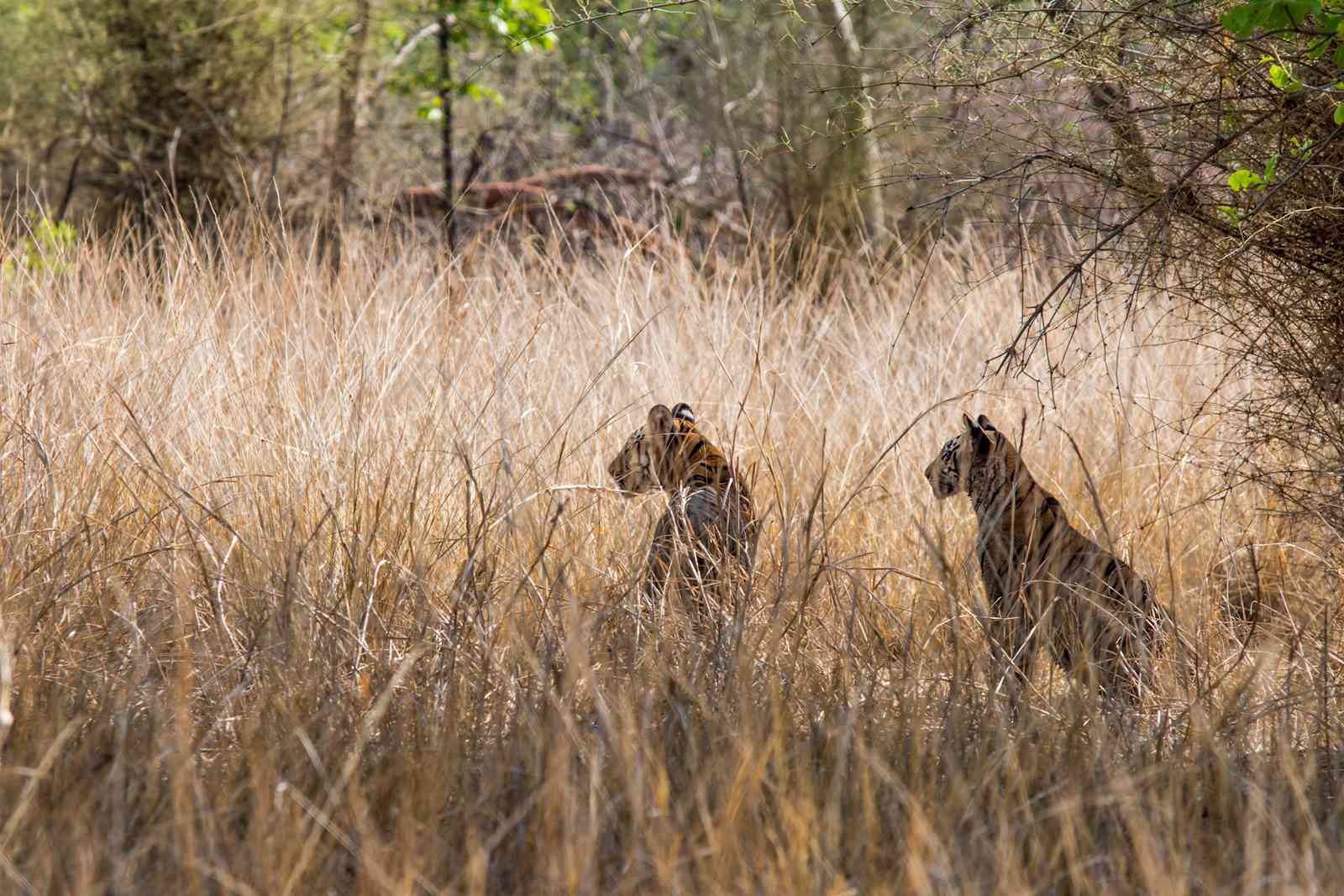In a world where biodiversity loss is accelerating, India has emerged as a rare success story. Over the past two decades, the country has achieved what many conservationists once considered impossible — doubling its wild tiger population. From barely 1,411 tigers in 2006 to over 3,100 in 2024, India now holds more than 70% of the global tiger population, a feat recognized by the Global Tiger Forum and environmental agencies worldwide.
Yet, behind the impressive statistics lies a complex narrative — one of grassroots dedication, evolving policies, community cooperation, and persistent challenges that continue to shape the future of India’s wildlife conservation movement. This story is not just about saving an animal; it’s about redefining the relationship between humans and nature in the world’s most populous democracy.
The Beginning of a Conservation Revolution
The decline of tigers in India during the 20th century was alarming. From an estimated 40,000 tigers in the early 1900s, relentless hunting, habitat destruction, and poaching for skins and bones had reduced their numbers to near extinction by the 1970s.
In 1973, the Government of India launched Project Tiger, a visionary conservation initiative spearheaded by then-Prime Minister Indira Gandhi. The aim was to protect tiger habitats, eliminate poaching, and involve local communities in conservation. Starting with nine tiger reserves across the country, Project Tiger laid the foundation for modern wildlife management in India.
Over the decades, the number of reserves has expanded dramatically. As of 2024, India boasts over 55 tiger reserves covering more than 75,000 square kilometers, spread across 18 states.
The Doubling Success — A Statistical Journey
The first comprehensive tiger census in 2006 painted a grim picture: only 1,411 tigers were estimated to survive in the wild. But through focused conservation policies and community engagement, subsequent surveys showed encouraging growth:
-
2010: 1,706 tigers
-
2014: 2,226 tigers
-
2018: 2,967 tigers
-
2024: over 3,100 tigers
This remarkable increase, achieved within just two decades, earned India global recognition. The country achieved the TX2 goal — doubling the tiger population — years ahead of the global 2022 target set at the St. Petersburg Tiger Summit in 2010.
What Drove the Tiger Comeback?
India’s success was not accidental. It was built on a mix of scientific monitoring, strict law enforcement, habitat management, and community participation. Let’s explore the key factors.
1. Scientific Monitoring and Technology
Gone are the days when tiger populations were estimated through indirect evidence like pugmarks. Modern India uses camera traps, DNA analysis, and satellite tracking to get accurate counts. The National Tiger Conservation Authority (NTCA) and the Wildlife Institute of India (WII) conduct nation-wide surveys every four years, using tens of thousands of camera traps and lakhs of images to identify individual tigers by their unique stripe patterns.
The use of GIS mapping, drones, and real-time monitoring apps has improved habitat management and anti-poaching operations. This data-driven approach has made conservation more precise and transparent.
2. Strict Anti-Poaching Measures
Poaching was once the single largest threat to tigers. The demand for tiger parts in illegal wildlife trade networks led to devastating losses. However, India’s crackdown on poaching has been decisive.
Specialized units like the Special Tiger Protection Force (STPF) and Wildlife Crime Control Bureau (WCCB) have strengthened law enforcement. Coordination between states, deployment of modern equipment, and the use of forensic analysis in wildlife crime investigations have significantly reduced poaching incidents.
3. Expanding and Connecting Tiger Habitats
Tigers need vast territories to thrive. Recognizing this, India has focused on creating corridors that connect fragmented habitats. Projects like the Central Indian Landscape Conservation Programme aim to link reserves across states like Madhya Pradesh, Maharashtra, and Chhattisgarh.
Such connectivity allows genetic exchange between tiger populations, preventing inbreeding and ensuring long-term species viability.
4. Community-Based Conservation
India’s conservation strategy increasingly recognizes that people living near forests are not adversaries but partners. Initiatives promoting eco-tourism, sustainable livelihoods, and compensation for livestock losses have helped align local interests with wildlife protection.
For example, in states like Madhya Pradesh and Karnataka, eco-development committees involve villagers in patrolling, fire control, and awareness programs. Communities now benefit economically from tourism revenue, giving them a stake in tiger survival.
5. Political and Institutional Support
High-level political commitment has been central to India’s tiger success. Regular monitoring by the Prime Minister’s Office, dedicated funding through the NTCA, and integration of conservation into national planning have ensured sustained policy focus.
Additionally, collaborations with international organizations such as WWF, UNDP, and the Global Tiger Forum have brought in expertise, funding, and visibility.
Success Stories Across India
1. Bandhavgarh and Kanha, Madhya Pradesh
Often called the “Tiger State of India,” Madhya Pradesh is home to some of the most successful tiger reserves. Kanha National Park, the inspiration for Rudyard Kipling’s Jungle Book, has seen stable tiger populations due to effective habitat management and strict protection.
2. Corbett National Park, Uttarakhand
India’s oldest national park continues to lead in tiger numbers. Corbett serves as a vital breeding ground, with dense forest cover and rich prey base ensuring a thriving population.
3. Nagarhole and Bandipur, Karnataka
The interconnected forests of the Western Ghats are among the best-managed tiger landscapes in the world. Community awareness and tourism management here are models for other regions.
4. Kaziranga, Assam
Known primarily for rhinos, Kaziranga’s dense grasslands also harbor a robust tiger population. Floodplain management and anti-poaching camps have made it one of India’s safest tiger habitats.
5. Sundarbans, West Bengal
The only mangrove habitat in the world with tigers, the Sundarbans present unique challenges like rising sea levels and human-wildlife conflict. Yet, innovative patrolling systems and local engagement have helped sustain its tiger population.
Ongoing Conservation Challenges
Despite the success, India’s tiger story is far from complete. The challenges ahead are serious and complex.
1. Habitat Fragmentation and Human Encroachment
Rapid urbanization, road construction, mining, and agriculture continue to shrink and divide tiger habitats. Many reserves are becoming “islands” surrounded by human settlements, making gene flow and movement increasingly difficult.
2. Human-Wildlife Conflict
As tiger populations recover and expand beyond protected areas, encounters with humans have increased. Livestock predation, crop damage, and rare but fatal attacks spark tensions. Unless addressed through compensation and awareness, such conflicts can undermine conservation efforts.
3. Climate Change
Changing rainfall patterns, rising temperatures, and altered vegetation are affecting tiger prey and habitats. Low-lying areas like the Sundarbans face additional threats from sea-level rise, potentially displacing both tigers and people.
4. Illegal Wildlife Trade
Although poaching has decreased, international demand for tiger parts persists. Organized crime syndicates remain active, requiring constant vigilance and stronger cross-border cooperation.
5. Tourism Pressure
While eco-tourism generates revenue, unregulated tourism can damage fragile ecosystems. Managing visitor numbers, ensuring responsible conduct, and distributing tourism benefits equitably remain pressing needs.
Lessons for the World
India’s tiger conservation journey offers valuable lessons for global wildlife management:
-
Science + Tradition Works Best – Combining modern technology with traditional forest knowledge enhances conservation outcomes.
-
Local Communities Are Key – Conservation must create tangible benefits for people living near wildlife.
-
Political Will Matters – Sustained leadership and funding are non-negotiable for long-term success.
-
Conservation Needs Constant Adaptation – Threats evolve, and so must strategies.
India’s approach proves that even in a developing country with high population density, wildlife and humans can coexist, provided policies are inclusive and science-based.
The Road Ahead: A Balanced Future
The story of India’s tigers is one of hope but also responsibility. With more than 3,000 tigers roaming the forests, India must now shift focus from merely increasing numbers to ensuring ecological balance and coexistence.
Future strategies should emphasize:
-
Expanding and restoring degraded corridors.
-
Climate-resilient management of reserves.
-
Integrating conservation with sustainable development.
-
Strengthening transboundary cooperation with Nepal, Bhutan, and Bangladesh for shared tiger landscapes.
As India modernizes, its challenge is to maintain the delicate balance between development and ecology. Tigers are not just apex predators — they are symbols of a healthy ecosystem. Protecting them safeguards countless other species, water systems, and human livelihoods dependent on forest ecosystems.












